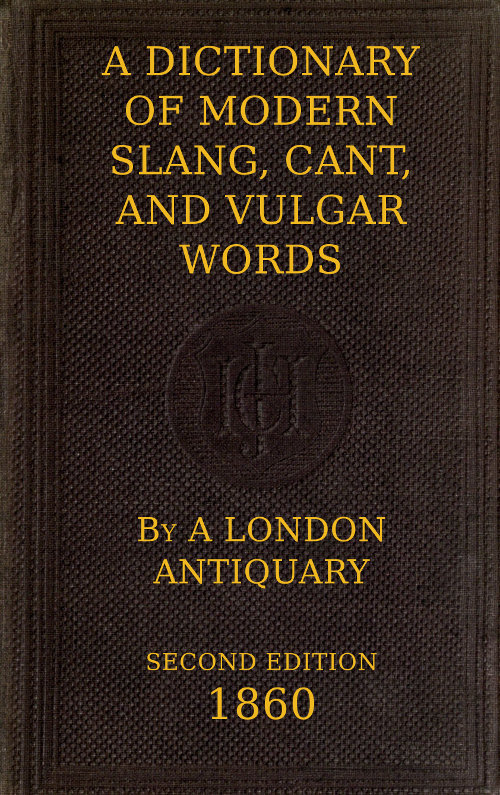A Dictionary of Slang, Cant, and Vulgar Words / Used at the Present Day in the Streets of London; the Universities of Oxford and Cambridge; the Houses of Parliament; the Dens of St. Giles; and the Palaces of St. James.
Play Sample
PREFACE TO THE SECOND EDITION.
The First Edition of this work had a rapid sale, and within a few weeks after it was published the entire issue passed from the publisher’s shelves into the hands of the public.A Second Edition, although urgently called for, was not immediately attempted.The First had been found incomplete and faulty in many respects, and the author determined to thoroughly revise and recast before again going to press.The present edition, therefore, will be found much more complete than the First; indeed, I may say that it has been entirely rewritten, and that, whereas the First contained but 3,000 words, this gives nearly 5,000, with a mass of fresh illustrations, and extended articles on the more important slang terms—HUMBUG, for instance. The notices of a Lingua Franca element in the language of London vagabonds is peculiar to this edition.
My best thanks are due to several correspondents for valuable hints and suggestions as to the probable etymologies of various colloquial expressions.
One literary journal of high repute recommended a division of cant from slang; but the annoyance of two indices in a small work appeared to me to more than counterbalance the benefit of a stricter philological classification, so I have for the present adhered to the old arrangement; indeed, to separate cant from slang would be almost impossible.
Respecting the HIEROGLYPHICS OF VAGABONDS, I have been unable to obtain further information; but the following extract from a popular manual which I have just met with is worth recording, although, perhaps, somewhat out of place in a Preface.
“Gipseys follow their brethren by numerous marks, such as strewing handfuls of grass in the day time at a four lane or cross roads; the grass being strewn down the road the gang have taken; also, by a cross being made on the ground with a stick or knife, the longest end of the cross denotes the route taken.In the night time a cleft stick is placed in the fence at the cross roads, with an arm pointing down the road their comrades have taken.The marks are always placed on the left-hand side, so that the stragglers can easily and readily find them.”—Snowden’s Magistrate’s Assistant, 1852, p.444.
Piccadilly, March 15th, 1860.
